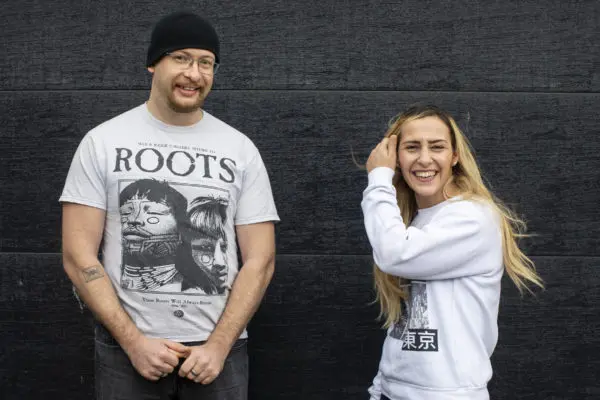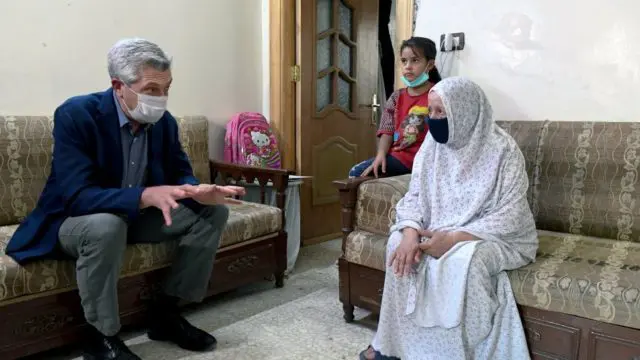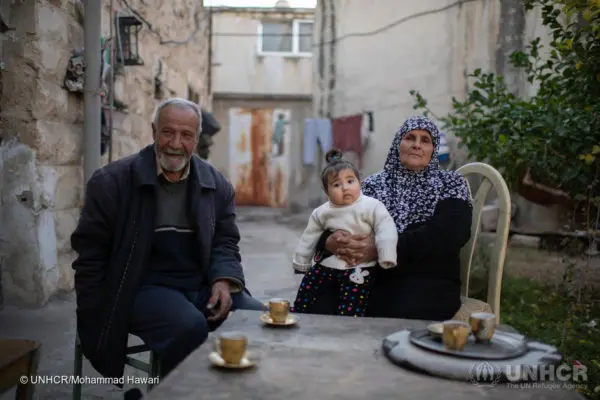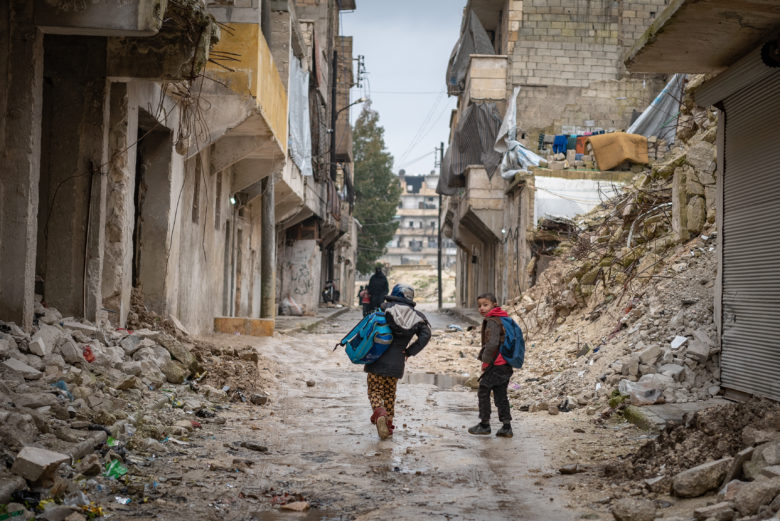
Civilians walk through the ruins of Aleppo, Syria. ©UNHCR/Antwan Chnkdji
After a decade in crisis, a look at what lies ahead for the world’s largest forcibly displaced population – and how UNHCR is helping with your support.
It’s a milestone no one wanted to mark. It’s a record no one wants to hold. Yet after 10 years of crisis in Syria, it is impossible to ignore the devastating impact on millions of families in dire need of humanitarian assistance.
The outbreak of war in Syria in 2011 led to one of the largest displacement crises in recent history. Syrians continue to be the largest forcibly displaced population in the world, including 6.6 million refugees and more than six million internally displaced people (IDPs).
While some have returned to their communities of origin in an effort to start over, challenges remain. Last September, UN High Commissioner for Refugees Filippo Grandi met with refugee families in Zamalka, on the outskirts of the capital Damascus. The town had suffered extensive damage during six years of conflict. More than two years after the end of fighting, they were still struggling to repair their homes, find jobs, and secure food and medicine.
DONATE TO SUPPORT SYRIAN REFUGEES
Shifting from an emergency response to longer-term durable solutions continues to be a key priority for UNHCR in 2021. With the generous support of donors, UNHCR is working with the government and our partners to provide critical humanitarian assistance, including community-based protection, shelter repair, vocational training and livelihood support, legal aid and documentation, primary health care and education.
Whether they remain within or beyond the country’s borders, in the face of immense hardship throughout this past decade, the Syrian people have demonstrated continued strength and resilience as they carry the hopes for better days ahead.
Syrian refugees in neighbouring countries: While Syrians have found refuge in countries worldwide the overwhelming majority — 83 per cent — are hosted by communities in neighbouring countries.
Syrian refugees look to the future.
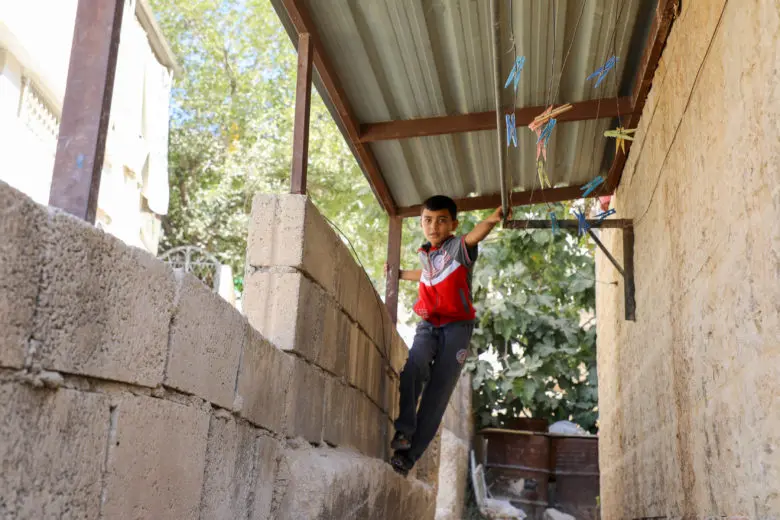
Syrian refugee Odai plays outside his home in Amman, Jordan. ©UNHCR/Lilly Carlisle
Odai was just six months old when an airstrike hit the home where he lived with his parents in Syria. After his father died and his mother was no longer able to look after him, his grandfather, Abdul Hameed, asked Odai’s great uncle to bring him across the border to live with him in Jordan.
Now aged 10, Odai has spent his whole life in Jordan and refers to his grandfather — otherwise known as Abu Alaa — as his dad. Abu Alaa was a taxi driver back in Homs, but in Jordan, he collects leftover bread to sell to pay the rent and began receiving UNHCR cash assistance to help support his family.
As Odai plays outside his home in Amman, he has dreams for a future where he can truly soar. “I want to be a pilot so I can fly back to Syria and see Homs from the sky,” he says.
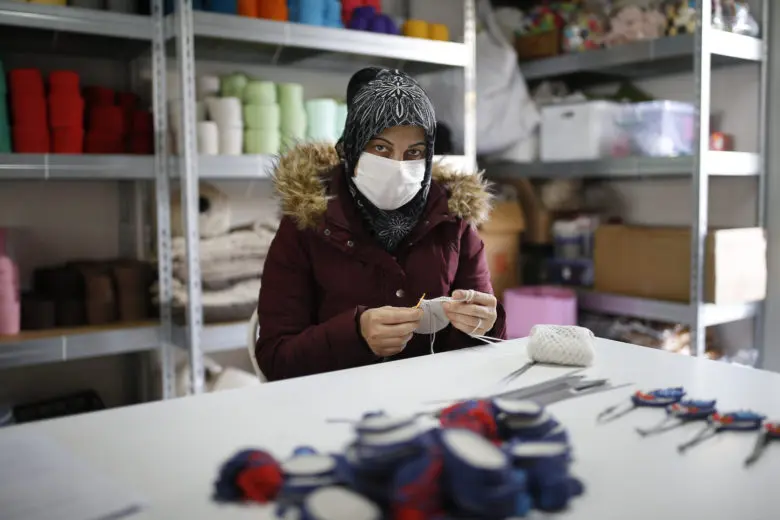
Rania, a 30-year-old refugee from Aleppo, Syria, has been living in Istanbul for seven years and handmakes toys at Bebemoss – a start-up supported by MADE51. © UNHCR/Emrah Gurel
Rania, a 30-year-old refugee from Aleppo, was forced to flee the war in Syria, arriving in Turkey six years ago. As a child, she learned from her mother how to make dresses for her toys. She has expanded her creative skill set by learning to crochet. She works with an Istanbul-based start-up — supported by a UNHCR-backed initiative — to help refugees earn money and introduce refugee artisans to global markets. “My goal for the future is to learn further and more professional ways to craft toys and to be able to craft any crochet [item] I see. I want to continue in my craft as I do love it.”
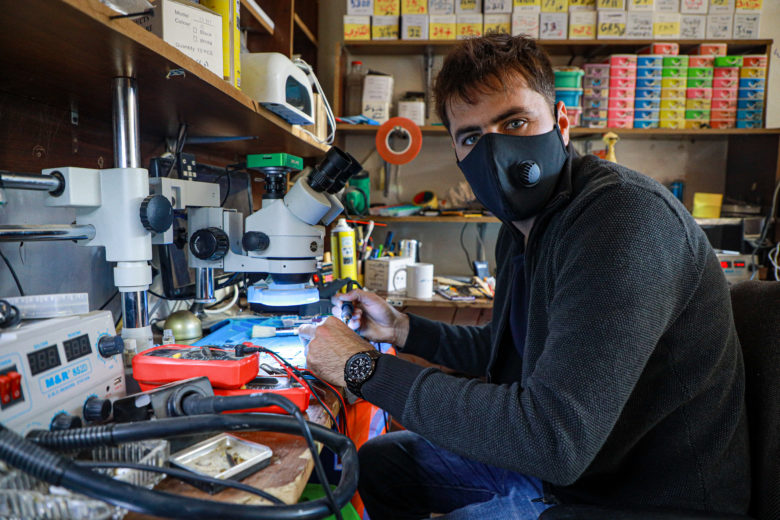
Syrian refugee Zakariya, 32, works in a mobile phone repair shop in Zaatari camp. © UNHCR/Shawkat Alharfosh
Zakariya is a 32-year-old refugee who, for the last eight years, has called Zaatari Camp in Jordan home. He currently works in a mobile phone repair shop, and his one-room caravan has been his safe refuge far from the fighting that forced him to leave his homeland.
Soon, Zakariya will be travelling more than 12,000 kilometres to Mexico City for the next step in his journey. He was selected for the Habesha scholarship supported by UNHCR to study a BA in psychology. “The circumstances that people from my country have lived through are very harsh. It has impacted a whole generation. But understanding psychology can help you understand why you feel a certain way. It can help you get through the trauma.”
To help more Syrian refugee families, visit unhcr.ca/Syria.





